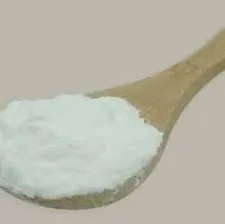Ethylene Formate A Comprehensive Overview
Ethylene formate, a compound resulting from the reaction between ethylene oxide and formic acid, serves as a versatile intermediary in organic synthesis. With the molecular formula C3H6O3, ethylene formate exhibits significant properties that enhance its utility in various industrial applications. In this article, we will delve into the characteristics, synthesis, applications, and environmental impact of ethylene formate.
Chemical Properties and Characteristics
Ethylene formate emerges as a colorless liquid with a sweetish odor, making it somewhat distinctive among ethers and esters. Its boiling point is approximately 150°C, and it has a moderate solubility in water, which is crucial for its applications in aqueous environments. The compound features functional groups such as hydroxyl (-OH) and carbonyl (C=O), endowing it with a reactivity that enables it to participate in diverse chemical reactions including esterification and acylation. Understanding its chemical properties is essential for chemists and engineers who aim to utilize ethylene formate in their processes.
Synthesis of Ethylene Formate
The synthesis of ethylene formate typically involves a two-step reaction. The first step is the production of ethylene oxide through the hydration of ethylene. Following that, formic acid is added to the ethylene oxide under controlled conditions, usually at elevated temperatures and pressures, to facilitate the reaction. The resulting product can be purified via distillation, yielding high-purity ethylene formate suitable for industry use. The efficiency and scalability of this synthesis route make it an attractive choice for manufacturers seeking to produce ethylene formate in large quantities.
Applications of Ethylene Formate
Ethylene formate has found an array of applications across different sectors. One of its primary uses is as a solvent in chemical reactions and extractions due to its excellent solvating properties. Its ability to dissolve a broad range of organic compounds makes it invaluable in the formulation of paints, coatings, and adhesives.
ethylene formate

In the agricultural sector, ethylene formate serves as a key ingredient in the development of agrochemical formulations, particularly pesticides and herbicides. Its properties enhance the efficacy and stability of active ingredients, ensuring better performance in agricultural applications.
Moreover, ethylene formate is utilized in pharmaceuticals as a precursor in the synthesis of various drugs. The compound serves as an intermediate in producing biologically active molecules, which are crucial for therapeutic interventions.
Environmental Considerations
While ethylene formate presents numerous benefits, it is crucial to consider its environmental impact. Despite being less toxic than many traditional organic solvents, the production and use of ethylene formate must be managed responsibly to minimize risks to human health and ecosystems. Manufacturers are encouraged to adopt green chemistry principles, focusing on sustainable practices that reduce waste and lower carbon footprints.
Regulatory frameworks are emerging globally to govern the use of solvents in industrial applications. Ethylene formate, being a relatively new entrant in this domain, is subject to scrutiny to ensure compliance with environmental standards. Ongoing research aims to better understand its long-term effects on the environment, with the goal of promoting safer practices in its production and use.
Conclusion
In summary, ethylene formate stands out as a significant compound in the world of organic chemistry. Its unique properties and comparatively low toxicity make it a valuable solvent and precursor in various applications, particularly in industries such as agriculture and pharmaceuticals. However, continuous efforts must be made to understand its environmental impact and implement responsible practices in its use. As industries seek to innovate while maintaining environmental stewardship, ethylene formate may play an essential role in a more sustainable future. With further advancements in research and technology, the potential of this compound will likely expand, contributing to a cleaner and greener world.

